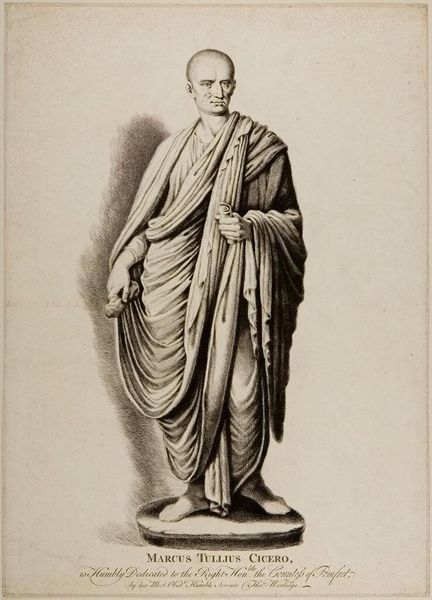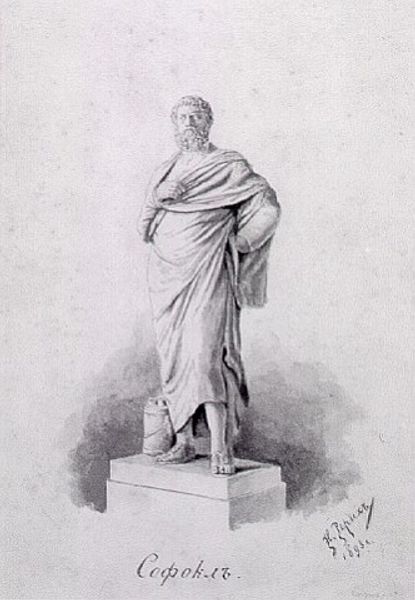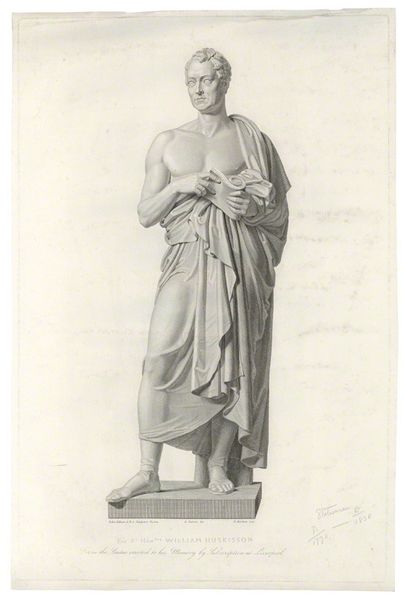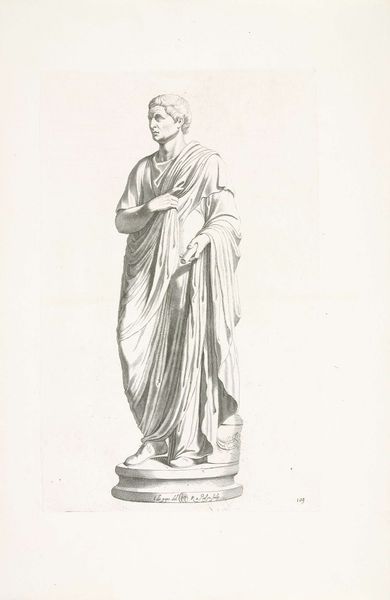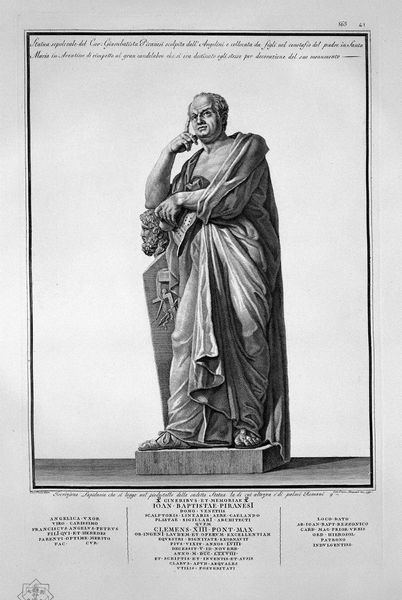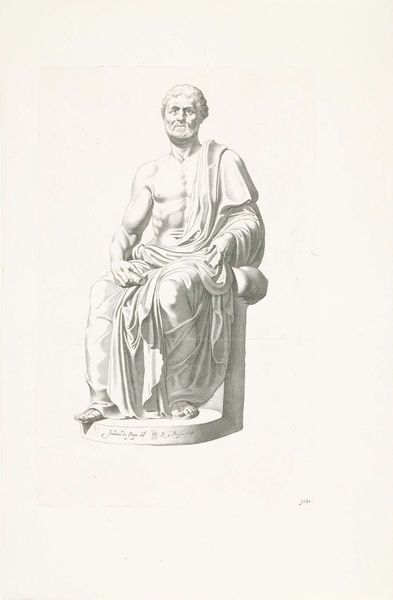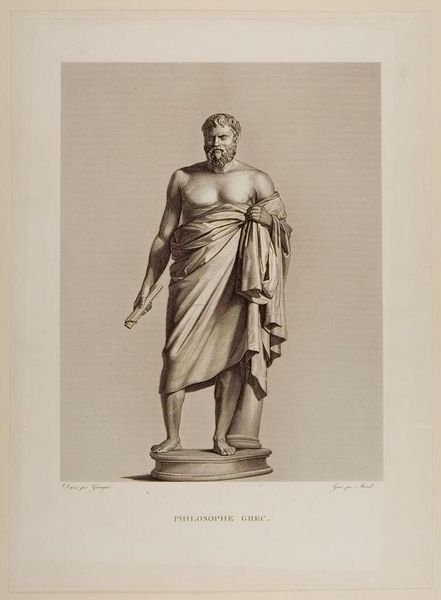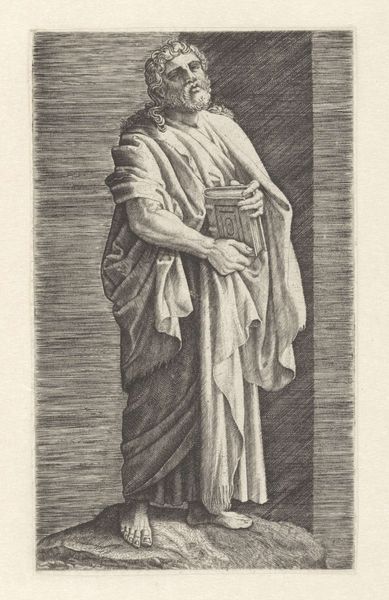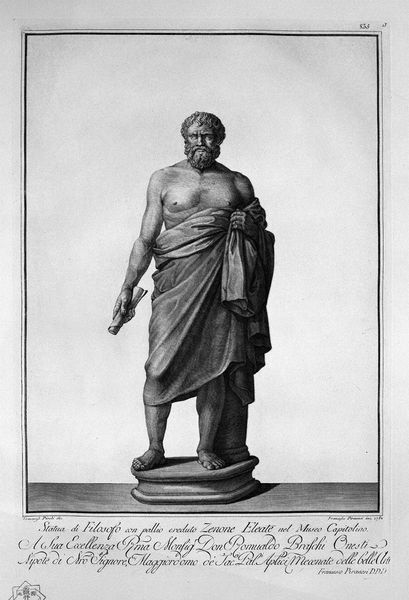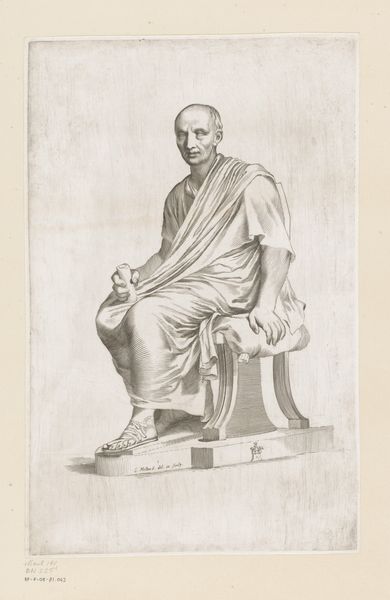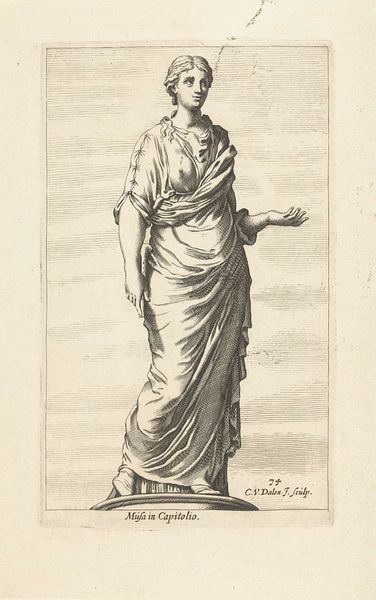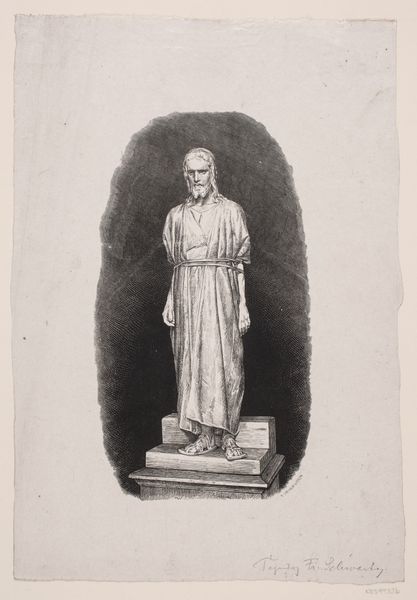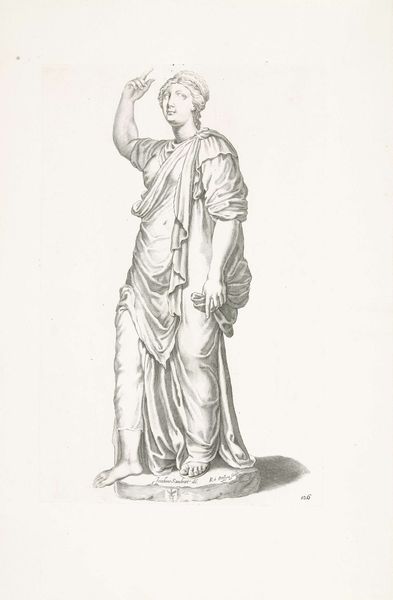
Copyright: Public domain
Curator: Here we have Nicholas Roerich's "Demosthenes," a graphite drawing completed in 1893. What's your first take? Editor: Immediately, I sense a solemn, almost melancholic mood. The subject's gaze is averted, and the monochromatic palette lends a timeless, somber quality. Is that even a photograph? It almost appears as though I am viewing an old, partially dusted historical record. Curator: Well, yes and no. While Roerich rendered this likeness in graphite, echoing classical portraiture traditions, this choice also invites a longer engagement. Note how he recreates ancient likeness, continuing memory. The drawing is derived from a classical bust, which is derived from ancient marble, all images which in turn recall this person, an influential greek states man who was known for speaking and for a particular bodily ailment he strove to remedy, according to the biography. Editor: Interesting point. Roerich wasn't just representing a man; he was channeling an image of power. How was that imagery understood in late 19th-century Russia, during a period of intense national identity formation? Was this classicism used to model political ideals? Curator: Precisely! The figure of Demosthenes would have served as a symbol of eloquence, resilience, and democratic ideals. Moreover, in fin-de-siecle Russia, this also evokes questions around how personal power is performed versus truly wielded; Roerich captures a figure who struggled and sought out means of self-perfection in spite of these struggles. Editor: Roerich often looked to the past to give his audiences access to some form of insight. This particular invocation of Demosthenes suggests an exploration of power, and particularly who has it, but this is coupled with a distinct austerity through that choice of material. Curator: Indeed. This art reminds us of how artists reinterpret enduring figures, layering new meanings onto age-old stories through cultural and personal experiences. Editor: Leaving us to consider our own connection to these iconic figures and the ideals they embody.
Comments
No comments
Be the first to comment and join the conversation on the ultimate creative platform.
